So, you’ve heard the term ‘customer support’ thrown around in the business world, right? But have you ever really taken a moment to think about what it means? It’s not just an operator at the end of a hotline or a speedy email reply – customer support is the heart and soul of every thriving business. As we delve deeper into this crucial business aspect, you’ll get a clearer picture of how it has evolved over time, its various roles, and why it’s so vital in our modern digital era. But, you may wonder, how has customer support evolved and what does it really mean to provide top-tier service? Let’s get down to the nitty-gritty and find out.
The evolution of customer support is a fascinating journey. It’s a story of progression from simple phone calls and emails to a world of live chats, social media interactions, and AI-powered bots. But in essence, outstanding customer support means being there for your customers, listening to their needs, and providing solutions that make their lives easier.
Understanding your customers is the basis of good customer support. It’s about knowing their needs, their pain points, and how your product or service can help them. It’s about being empathetic, patient, and solution-oriented. In the fast-paced digital world we live in today, providing timely and effective support can make the difference between a one-time customer and a loyal one.
So, whether you’re a small business owner, a startup founder, or a customer support agent, remember this: customer support is not just a necessity – it’s the backbone of your business. It’s what sets you apart from the competition, builds trust with your customers, and ultimately drives your success. In the words of Bill Gates, ‘Your most unhappy customers are your greatest source of learning.’
To sum up, customer support is more than just solving problems – it’s about creating an exceptional customer experience that leaves a lasting impression. And in today’s digital age, it has become more important than ever. So let’s embrace it, improve it, and make it the best it can be.
Introduction
Let’s Chat About Customer Support
Picture this: you’re running a business and, naturally, you want your customers to be happy. Enter customer support – your secret weapon! In layman’s terms, customer support is the dedicated team within a business that helps customers solve any issues they might be having with the product or service.
Now, let’s talk about why customer support is important. The main aim of customer support is to make sure customers are successful and satisfied. When your customer support is top-tier, you’re not just fixing problems, but you’re also building trusting relationships with your customers. This can be a great way to bring in new customers and increase your sales.
Think of customer support as the glue that holds customer loyalty and satisfaction together. It’s the tool that can turn a not-so-happy customer into a loyal one. It’s the spark that ignites positive conversations about your business, helping your company to grow. Basically, customer support is a must-have for keeping your brand’s reputation shiny and bright. When you put resources into effective customer support, you’re investing in the success of your business.
‘Investing in customer support is like investing in a brand’s future. It’s the foundation of building trust, loyalty and ultimately, a successful business.’ – Anonymous
So, remember to keep your language simple, stay up-to-date with current events, and always provide context. A conversational style and persuasive tone can go a long way in engaging your readers. Most importantly, make sure your content is unique and free of spelling and grammar mistakes. It’s all about giving your readers rich, detailed information in a way that’s easy for them to understand.
Happy writing!
Understanding Customer Support
So, what’s the deal with customer support, really?
Well, let’s kick things off by differentiating it from customer service. Now, don’t get me wrong, they both play a critical role in any business, but they’re not quite the same thing.
Customer support, my friend, is like the lifeblood of a business. It’s all about keeping your customers happy and loyal to your brand. I mean, think about it – doesn’t it feel good when a company actually cares about your issues and works hard to solve them? That’s what customer support is all about.
But hold on a second, we’re not just talking about any customer support here. We’re talking about effective customer support. You know, the kind that not only solves your problem but leaves you feeling like a valued customer? Yeah, that’s the good stuff!
So, let’s dive a bit deeper into this. Let’s unravel the mystery of customer support and understand why it’s so darn important for your business. Let’s talk about what makes customer support effective and how it can be a game-changer for your business.
Are you ready? Let’s get started!
Definition of customer support
So, let’s have a friendly chat about customer support. What’s it really all about? Well, think of it as your personal hero team, always ready to swoop in and save the day whenever you face any issues with a product or service you’ve bought. But don’t be fooled, their job isn’t just about fixing problems. It’s much more than that – it’s about ensuring you squeeze every bit of value out of your purchase, making sure you’re smiling all the way!
Now, isn’t that a great way to keep customers happy and satisfied? Absolutely, yes! So next time you’re stuck with a sticky situation, remember, the customer support team is there to help. They’re your allies in getting the most out of your purchase.
Let’s raise a glass to these unsung heroes who work behind the scenes to keep our customer journey smooth and hassle-free!
Differentiating customer service and customer support
Understanding Customer Service and Customer Support
Let’s have a chat about customer service and customer support. You might think they’re the same, but they’re actually quite different. Let’s break it down.
What’s Customer Service?
Customer service is an umbrella term that encompasses every interaction a customer has with your brand. It’s all about being proactive – going out of your way to make sure customers are happy and their experience with your brand is top-tier. It’s like throwing a party and making sure everyone has a good time.
What’s Customer Support?
Customer support, on the other hand, is more specific. It’s a slice of the customer service pie, dealing specifically with technical issues related to your product or service. It’s all about reaction – jumping in when a customer has an issue, post-purchase, and helping them solve it. It’s like being a superhero, swooping in to save the day when there’s a problem.
Why Does the Difference Matter?
Knowing the difference between these two facets of customer interaction is key to providing a stellar experience to your customers. It helps you know where to focus your energy and how to best meet your customers’ needs. Remember, a happy customer is a loyal customer!
So, there you have it. Next time you’re strategizing about how to improve your brand’s customer relations, keep in mind the unique roles of customer service and customer support. They’re two sides of the same coin, each vital in its own way to the customer experience.
Happy strategizing!
Importance of customer support
The Real Deal about Customer Support
Let’s chat about something that plays a huge role in the world of business – customer support. It’s not just a buzzword or an optional extra. It’s a game changer. It’s the magic ingredient that can make your business rise or fall. It’s what keeps your customers coming back for more, and helps your company to flourish and thrive.
Imagine a customer who’s having some trouble with your product. They’re frustrated, maybe even ready to give up. But then they reach out to your customer support team. And what happens next? That’s where the magic happens.
Your team doesn’t just fix the problem. They turn the whole experience around. They’re not just solving issues – they’re creating memorable experiences. They’re making sure that every interaction a customer has with your company is a great one, exceeding their expectations every time.
That’s the power of customer support. It’s not just about putting out fires. It’s about building strong, lasting relationships with your customers. It’s about winning their loyalty and their repeat business. It’s about making sure that every single one of your customers feels valued and appreciated.
So, when we talk about the importance of customer support, we’re not just talking about solving problems. We’re talking about growing your business, building strong customer relationships, and creating an amazing customer experience.
Remember, your customer support team isn’t just a problem-solving squad. They’re a vital part of your business, driving it forward and helping it to succeed. And that’s why customer support is so important.
‘Customer support isn’t just about fixing issues, it’s about creating memorable experiences that keep customers coming back for more.’
Key features of effective customer support
You know what can really set your business apart? Good customer support. It’s like the secret ingredient to a successful business recipe.
Think about it, we all love it when we get help just when we need it, right? And it’s even better when it’s done in a caring and understanding manner. That’s what timely and empathetic support does. It makes your customers feel valued and cared for.
But wait, there’s more! It’s not just about being there for your customers when they need you. It’s also about understanding their needs, even before they do. That’s where skilled problem-solvers come into play. These are the folks who can offer personalized help and can spot potential issues before they turn into big headaches.
Here’s another thing to consider: no one likes to wait around, especially when they’ve a problem. Offering self-service options is a great way to show your customers you respect their time. It’s like saying, ‘Hey, we trust you to solve this on your own, but we’re here if you need us.’
And let’s not forget the power of technology. With customer service software, you can simplify the whole support process. It’s like having a well-oiled machine that keeps your customer support running smoothly and efficiently.
Evolution of Customer Support
Let’s have a chat about the ‘Journey of Customer Support’. It’s quite a story – starting off in small local businesses, progressing to the unveiling of call centers in the cool ’60s, and now, making the leap to integrating artificial intelligence. It’s clear to see that customer support has grown and adapted over time.
Why is this past important though? Well, understanding the history and progression of customer support, along with the current trends and significance for business growth, can provide a strong foundation for developing your own effective customer support strategies. So, let’s delve into this chronicle of customer support, shall we?
Remember, the key to great customer support is keeping up with the times and understanding what your audience needs. It’s about simplifying language and avoiding clichés and overused words. And most importantly, it’s about explaining the ‘why’ behind its importance.
The voice of your customer support should be active and clear, without exaggerating any facts or claims. Specific examples and product recommendations can also be useful when needed. So, let’s get started, and remember to keep it conversational, just like we’re having a good old chat.
In this journey, we need to be careful with our word choices, stick to the facts, and ensure that our content is unique. And of course, we need to keep an eye on our spelling and grammar. After all, we’re here to make a connection with our audience, right?
So, strap yourselves in as we embark on this exciting journey of exploring the evolution of customer support. It’s going to be an enlightening ride!
‘There is nothing more important than understanding your business.’ – Gerber
A brief history of customer support
Let’s take a leisurely stroll down memory lane and look at how customer support has progressed over time. Once upon a time, it was all about neighborhood businesses who knew each of their customers by name and provided them with a personalized touch. The aim was simple – keep the customer happy and sort out any problems they might be facing.
Here’s a snapshot of how it all went down:
- Those good old local businesses: Remember when you walked into a store and the owner knew you by name? They knew exactly what you liked and what you didn’t, providing a unique service tailored just for you.
- The era of limited options: Back then, if you’d a problem, you’d to figure it out yourself or ask someone who might know how to solve it. The idea of self-help resources was still a distant dream.
- The birth of call centers: Come the 1960s, businesses started using telephones to help their customers. It was a step up, but still far from perfect.
- Changes in the service: Fast forward to the 1980s, companies started cutting out services that weren’t bringing in profits.
Fast forward to today and customer support has transformed dramatically. Now, it’s all about addressing customer concerns as quickly and effectively as possible. It’s been quite a journey, hasn’t it? And, looking at how it’s progressed, it’s safe to say it’ll continue to evolve for the better.
After all, as the great Bill Gates once said, ‘Your most unhappy customers are your greatest source of learning.’ So, here’s to continual learning and evolution in the world of customer support!
The new approach to customer support and its significance for business growth
The Evolution of Customer Support and Its Role in Business Growth
Isn’t it fascinating to look back and see how customer support has evolved? I mean, it’s not just about solving problems anymore, but rather, it’s a key driver for business growth. Businesses today are leaving no stone unturned to boost their customer support. They’re harnessing the power of technology, employing expert problem solvers, and offering empathetic help.
A New Take on Customer Support
We’re seeing a fresh perspective on customer support these days. It’s not just about answering phone calls or responding to emails anymore. It’s about offering self-service options and setting up contact centers to serve customers better. And why not? After all, it’s the customers who keep the business wheels spinning.
Why Customer Support Matters
A strong customer support system can make or break your business. It directly impacts customer satisfaction, their loyalty towards your brand, and the chances of them coming back for more. That’s why it’s not just good to have, but absolutely necessary for a business to invest in a top-quality support system and qualified personnel.
The Bottom Line
Strategies for Delivering Outstanding Customer Support
So, you’re keen on delivering top-notch customer service? That’s awesome! Let’s break down some strategies that will help you hit the bullseye.
First things first, equip your team with the best tools. You know what they say, right? ‘A good workman never blames his tools.’ But hey, they need to be good tools to begin with! Think about it – your team is the frontline of your business. Arm them with the best, and they’ll deliver the best.
Next up, consider self-service options. We’re not talking about buffet-style here, but hey, who doesn’t love a good buffet? We’re talking about giving your customers the power to help themselves. It’s like teaching a man to fish – they’ll never go hungry again. Plus, it takes some load off your team. It’s a win-win!
Hiring is the next biggie. You need people who’ve the right skills, and not just on paper. You’ve got to have a team that cares, one that can empathize with the customers, and are creative problem solvers.
Speaking of problem-solving, it’s a must in customer service. Customers have problems – that’s why they’re reaching out to you. So, how you solve those issues is crucial. It’s not just about finding a solution, but about how quickly and effectively you do it.
Last, but not least, empower your team. Give them the freedom to use their skills to the fullest. They’re your knights in shining armour, riding into battle for you. Let them shine.
Ensuring your team has the right tools
Let’s talk about setting up your team for success with top-notch customer support. It all starts with giving them the right tools. Picture this, your team is fully equipped with dedicated customer service software. Doesn’t that sound like a dream? Well, it’s not. This simple step not only smooths out the workflow but also helps avoid pesky problems such as duplicate replies.
Let’s look at some of the best tools you should consider:
- AI technology is an absolute game-changer. No, we’re not talking about robots taking over the world. We’re talking about a tool that can help provide a personal touch to every customer interaction, making them feel valued and understood.
- Shared inboxes and built-in help centers are like a godsend for easy management and response to customer queries. Imagine, no more lost emails or missed customer inquiries. Everything in one place and at your team’s fingertips.
Offering self-service support options
Why not rethink your customer support strategy and add self-service support options? It’s a great way to arm your customers with the tools they need to figure things out on their own.
How about creating a handy knowledge base packed with commonly asked questions and step-by-step articles? This is a win-win, not only do your customers get to solve their problems, but your support team gets some breathing room to tackle more challenging issues.
Just remember to make your content easy to find – optimize it for search engines and organize it in a way that makes sense. With tools like Help Scout, you can pull up relevant content right when your customers need it, making their experience with your support channels even better.
At the end of the day, it all comes down to making it as easy as possible for your customers to find and use these self-help resources. By providing a range of self-service support options, you’re catering to all kinds of customer needs and preferences – and that’s sure to boost customer satisfaction across the board.
Hiring for key support skills
There’s no denying that self-service options are a game changer for customer support. But have you ever stopped to consider how vital the right team is to take your customer service to the next level? It’s like having the right spices to make a dish truly delicious. And in this case, your customer support team are the essential ingredients.
So, what kind of skills are we talking about?
- The Calm in the Storm: Imagine a tough situation. Your customer support team should be the ones who remain composed and unflustered.
- The Art of Expressing: It’s not just about giving the right solutions; it’s about expressing them in terms that your customers can understand.
- The Empathy Factor: Empathy isn’t just about understanding someone’s feelings. It’s about feeling their pain and working hard to lessen it.
But how do you get such a dream team?
- Sweeten the Deal: A solid paycheck is always an effective magnet for talented individuals.
- The Growth Factor: Ensure your team members see a future with you. Give them opportunities to learn, grow, and advance in their careers.
Remember, your customer service team is the face of your business. Make sure it’s a face your customers would love to see.
As the saying goes, ‘The customer’s perception is your reality.’ So, make their experience with your team a great one. And in the process, make your business a success.
Empowering your team to use their skills
Encouraging Your Team’s Skills
Imagine this – your support team, confidently handling customer issues on their own, resulting in efficient and tailor-made service. Sounds great, right? This can be achieved by cultivating an environment that values their unique customer service skills. Regular training and development aren’t just about improving your team’s skills, but it also lets them know they’re appreciated.
Clear Goals and Autonomy
Let’s set the scene. You outline the goals and expectations for your support professionals, but you let them navigate the path to achieving those in their own unique style. No micromanaging. No stifling creativity. Just pure, uninhibited problem-solving.
Tech to the Rescue
Next, we bring in technology to handle the mundane day-to-day tasks. This frees up your team to focus on what they do best – providing personalized support to your customers.
The Outcome
This strategy of encouraging your team’s skills creates a vibrant work environment where your support professionals can thrive. And the result? Happier customers, improved satisfaction, and a boost in loyalty.
Fostering effective problem-solving
Let’s chat about how we can build a customer support team that’s a problem-solving powerhouse. We all know that having a team that can quickly and effectively solve customer issues is key to success.
So, what can we do to make sure that our team is up to the task?
Firstly, we need to make sure that our team members have all the skills they need to solve problems. This means investing in training and giving them the tools they need to succeed. For instance, we could take a leaf out of Ritz-Carlton’s book and implement their $2,000 rule. This rule gives team members the autonomy to solve customer problems quickly, without having to wait for approval.
On top of this, we need to make sure that our team is proactive in their approach to problem-solving. They should be able to spot potential issues before they become problems. One way to do this is by using customer data to anticipate problems. This will enable us to make decisions that are based on data, which will improve our support services.
As a result, our customers will be happier and more satisfied with the services that we offer. And who doesn’t want that? So, let’s get started on building a problem-solving powerhouse of a team.
Making it easy for customers to get support
Hey there! Let’s chat about how we can make your customer support more accessible.
In the hustle and bustle of the business world, customer satisfaction is a big deal. And one of the best ways to keep your customers happy is by making sure they can reach your support team easily.
Think about it this way – when your customers have a question or an issue, they don’t want to jump through hoops to find help. They just want answers, right? That’s why self-service support options can be a game-changer. Things like FAQs and a knowledge base can give your customers a chance to find help on their own. It’s like giving them a map to navigate through their problems. Plus, it’s a bonus for your support team as it lightens their load!
But wait, there’s more! Investing in customer service software is another smart move. Look for features such as shared inboxes and automated workflows. These can make it super easy for customers to connect with your support team.
And let’s not forget the humans behind the machines – your support professionals. People skills are key here. Patience, attentiveness, and strong communication are just a few of the traits that make a customer support pro. Regular training and chances for career growth can help them shine even brighter, offering top-notch support to your customers.
So, to sum it up, making your customer support accessible is a win-win. It keeps your customers happy and your support team efficient. It’s like a secret recipe for customer loyalty and satisfaction.
Prioritizing personalized support over automation
Let’s chat about something we all value – good customer service. It’s all about that personal touch, right? When a customer support team really gets you and your needs, it’s like a breath of fresh air. They’re not just following a script, they’re listening to you and offering solutions that are tailored just for you. It’s not just about solving problems, it’s about building relationships.
The Magic of Personalized Support
Knowing your customers is key. It’s about seeing beyond the ticket number and understanding the person behind it. What’s their story? What do they need from you? What’s been their journey so far? By understanding these things, you can provide a level of service that really resonates with them.
And guess what? This kind of understanding can’t be automated. It comes from genuine human interaction and empathy.
The Limitations of Automation
Don’t get me wrong, automation has its place. It can be super helpful in handling routine tasks. But when it comes to delivering top notch customer service, there’s no substitute for the human touch.
Sure, a bot can give a quick response, but it can’t understand the subtleties of a customer’s frustrations or concerns. It can’t provide the same comfort or reassurance that a human can.
The Bottom Line
Providing personalized support isn’t just good for your customers, it’s good for your business too. It builds loyalty, increases customer satisfaction, and can even lead to better customer retention rates. So, why not take a step back from automation and focus on building stronger relationships with your customers? You might be surprised at the difference it can make.
Utilizing data to continually improve support
Your Data is Your Guide to Better Customer Support
You know what they say, ‘Knowledge is power.’ In the realm of customer support, your data is that knowledge. It’s like a treasure map, leading you to areas where you can tweak and refine your support strategies.
Think about it. Every customer interaction, every piece of feedback – it’s all valuable data. It can help you spot patterns and pinpoint areas that need a little bit of TLC. When you put that data to work, you can initiate changes that amplify the support process.
But don’t just sit back and relax once the changes are in place. Oh no, the journey isn’t over yet! The next step is to keep an eye on how these improvements are impacting customer satisfaction. Are your customers happier? Are they getting their issues resolved faster? You’ve got to keep your finger on the pulse to ensure your strategies stay on point.
This approach, driven by data, empowers you to make decisions based on facts rather than hunches. It keeps your strategies relevant in this fast-paced world, and above all, it helps you deliver a superior customer experience.
And remember this, my friend, in the customer support world, the name of the game is constant improvement.
Here’s a quote that sums it up quite well, ‘In God we trust; all others must bring data.’ So, keep collecting that data, keep refining your strategies, and watch your customer support success soar!
Examples of Successful Customer Support
Let’s chat about some real-world examples of great customer service. Specifically, we’ll discuss how companies such as DevRev OneCRM have made significant strides in improving their customer support, leading to a solid brand reputation.
You’ll learn how smart support strategies can help keep customers coming back, give businesses an edge over their rivals, and lead to higher sales and profits.
Case study: DevRev OneCRM and its positive impact on customer support
Take a moment to think about DevRev’s OneCRM and the significant positive changes it has brought to the field of customer support. This software has become a game changer, improving the way companies operate and assist their customers.
Process Optimization: OneCRM has revolutionized the way companies manage their support operations, resulting in significant improvements in both efficiency and productivity.
Better Customer Service: The primary goal of customer support is to assist customers in the fastest and most effective manner possible. With OneCRM, businesses can offer a level of service that’s both personal and efficient, raising the standard for the industry.
Feature-Rich: OneCRM is packed with a host of useful tools. Let’s take a look at some of them:
- Shared Inboxes: This feature promotes superior team collaboration and faster response times.
- Automated Workflows: Say goodbye to manual tasks. This feature frees up time for your support team, allowing them to focus on resolving complex customer issues.
In a nutshell, OneCRM has proven to be a shining example of what successful customer support looks like.
Positive brand reputation as a result of exceptional customer support
Just like how OneCRM has set a new standard in customer support, we’ve seen several companies gain a good reputation thanks to their top-notch customer service. Let’s chat about some of these success stories.
Take Zappos, for example. They’re famous for their individualized help and proactive communication. These efforts make sure customers are more than happy, which in turn, boosts their brand reputation.
Amazon is another great example. They’re quick to resolve issues and always provide personalized support. These practices help them build and maintain a loyal customer base.
Apple is yet another company that shines in this department. Their quick and friendly support plays a big role in their positive brand image and high customer satisfaction levels.
Buffer is also a standout, using CRM platforms and interacting with customers on their preferred communication channels. This helps them build a great brand reputation.
And who can forget Ritz-Carlton? Known for their effective problem-solving and never-ending quest for improvement, they’ve mastered the art of customer support.
These examples illustrate how important exceptional customer support is. It’s the key to making customers happy and loyal, which ultimately leads to a great brand reputation.
Improved customer retention through effective support strategies
You know what’s really cool? Companies that prioritize their customers by investing in powerful customer support strategies. They’re the ones who end up with a loyal fan base that sticks around. Just take a look at the big guys like Zappos, Apple, and Amazon. They’ve nailed it! They’ve got it down to a science with their quick solutions, tailor-made support, and simply unbeatable customer service.
So, what’s the secret sauce? Here are a few ideas:
- Treat ‘Em Like Gold: Think of your customers as your best friends. They’re individuals, not just numbers, so give them the personalized attention they deserve.
- Power to the People: Trust your support agents. Let them make the calls needed to enhance the customer experience.
- Stay One Step Ahead: Don’t just sit back and wait for customers to bring issues to you. Be proactive and try to foresee their problems.
- Be There, Anywhere: Make sure your customers can reach you easily, no matter where they’re or what platform they prefer.
By adopting these strategies, not only will you keep your current customers happy, but you’ll also attract new ones and boost your sales. It’s a win-win situation!
Here’s a thought to remember: ‘Your customers are the lifeblood of your business. Treat them well, and they’ll keep coming back. Neglect them, and they’ll find someone who won’t.’ You’ve got this!
Gaining a competitive advantage with outstanding customer support
Gaining an Edge with Stellar Customer Support
Have you ever thought about the role customer support plays in the success of your business? Let’s take a moment to discuss how top-notch customer support can set your business apart from the crowd. We’ll also share some inspiring stories from well-known companies that have taken their customer support to the next level.
Think about companies like Zappos and Amazon. Their customer support isn’t just about putting out fires and fixing problems. It’s about creating unforgettable experiences that make customers feel valued and appreciated. Zappos, for example, is famous for its remarkable service. They once surprised a customer by sending flowers after they heard she’d lost a family member.
And then there’s Amazon. Who hasn’t heard of their ‘Mayday’ button? With just a single click, customers get instant, round-the-clock support. It’s a game-changer that’s raised the bar for customer service.
Your business can also stand out by making customer support a top priority. It’s not just about solving problems. It’s about going that extra mile to exceed customer expectations and turn them into enthusiastic advocates for your brand.
So, let’s learn from these successful companies and put our customers first. After all, happy customers are our best advertisement. Remember, it’s not only about resolving issues, it’s about creating memorable experiences and fostering lasting relationships. Because in the end, it’s the customer who decides the success of our business.
Increased sales and revenue driven by exceptional customer service
Great customer service – it’s not something to be underestimated. Just take a look at big names like Zappos, Amazon, Apple, Buffer, and Ritz-Carlton. These companies have risen to the top and it’s no accident. A large part of their success lies in their focus on customer service. They’re proving to us that treating customers right really does pay off.
Let’s take a closer look at Zappos and Amazon. These companies are known for their responsive and personalized customer service. They understand that a happy customer today can turn into a loyal customer tomorrow. This recognition has resulted in high levels of customer satisfaction and, you guessed it, increased sales and revenue.
But they’re not alone in this. Apple, Buffer, and Ritz-Carlton are also making waves with their customer service approach. They’re proactive, they’re personalized, and they’re creating positive experiences for their customers. This approach is doing more than just resolving issues – it’s driving customer satisfaction. And this leads to one thing: more sales and higher revenue.
Key Elements for Building a Successful Customer Service Team
Want to make your customer service team a smashing success? Let’s chat about some must-haves.
First off, it’s critical to have a thorough knowledge base. Why? Because it’s like a cheat sheet for your team that leads to quicker, more effective support.
Secondly, always have clear response time goals. It’s simple: customers want quick responses and you need to deliver.
Next up, don’t forget to keep an eye on your performance metrics. It’s like your report card – it shows you where you’re acing it and where there’s room for improvement.
Tech tools are your best buddies here. Equip your team with the latest and greatest to help them deliver top-quality service.
And last but not least, always encourage your team to deliver personalized, proactive support. It’s like adding a cherry on top of your customer service sundae – it makes everything better.
Creating a knowledge base for efficient support
To give your customers the best support, you need to have a well-placed, streamlined knowledge base. Think of it as a self-help tool for customers, reducing the need for them to reach out for support as they can find answers on their own.
Let’s chat about the main areas your customer service team should concentrate on:
Sorting Out the Content:
Let’s make things simple. Group relevant topics together. It’s like tidying up your room; when everything is in its place, it’s easier to find what you’re looking for, right? The same goes for your customers.
Polishing the Content:
Think of the last time you were looking for information online, but it was outdated. Frustrating, right? So, let’s keep all the information up-to-the-minute and precise. Plus, a search function can be a real game-changer. Imagine being able to find what you’re looking for in seconds.
Setting response time goals to ensure timely assistance
Why Set Response Time Goals? Let’s Talk!
You know what’s super important in customer service? Timing! It’s like hitting a home run in the bottom of the ninth. You’ve got to have the right timing to make a big impact.
Setting specific, attainable response time goals for your customer service team is one great strategy to ensure that your customers are getting the help they need, just when they need it.
Imagine this: your customer service representatives have clear targets and know exactly what’s expected of them. That’s accountability at its best! And guess what, it’s not just beneficial for your team. It also guarantees a uniform experience for your customers, no matter who they’re talking to from your team.
But setting goals is just one part of the puzzle. To make sure your team is sticking to those goals, you need to keep an eye on things. Regularly checking and measuring response times can help you see if they’re on track or if there’s room for improvement.
And it doesn’t matter if you’re offering support over the phone or through other means. What matters is the speed of your responses. The quicker you can answer a customer’s query, the happier they’ll be with your service. Trust us, it’s a surefire way to win their hearts and build trust in your company’s support services.
In a nutshell, a strong dedication to efficiency and effectiveness in customer service can pave the way for a solid relationship with your customers. Now isn’t that a goal worth aiming for?
Monitoring and analyzing metrics to evaluate success
When it comes to creating a stellar customer service team, you can’t underestimate the importance of monitoring and understanding key metrics. These data points aren’t just numbers; they tell a story about your team’s effectiveness and your customers’ happiness.
- Must-Know Metrics
- Happiness Quotient (CSAT): This one’s pretty straightforward. It tells you how satisfied your customers are with their interactions with your team. The higher the score, the happier the customer, and the better your team is performing.
- Recommendation Index (NPS): This one’s interesting. It tells you how likely your customers are to recommend your business to their friends, family, or colleagues. The higher the score, the more your customers are singing your praises.
- Customer Interaction Counts
- First Reply Timing: This is all about how quickly your team jumps into action when a customer reaches out. The quicker the initial response time, the better your customer’s experience.
- Issue Sorting Speed: This metric is about how swiftly your team resolves customer issues. The speedier the resolution, the better your team is at keeping customers satisfied.
And remember, these numbers aren’t just abstract data floating in the ether. They’re a reflection of your team’s performance, the effectiveness of your processes, and the happiness of your customers. So, keep an eye on them, understand what they’re telling you, and use them to hone your approach to customer service. After all, a happy customer is a loyal customer.
Empowering the team to deliver personalized support
Keeping tabs on your squad’s achievements is important, of course. However, it’s just as vital to give them the freedom to provide a personal touch in their support. Each interaction with a customer isn’t just a conversation, it’s an opportunity to cater to their needs and surpass their expectations.
So, how do we do this? It begins with lending an ear, responding with empathy, and putting the customer first. Provide your team with regular training to improve their problem-solving and communication skills. Use the latest tech to simplify your support process, making it more efficient and allowing for more customized service.
But above all, encourage a customer-focused mentality within your team. Motivate them to take control of interactions and put personalized solutions first to satisfy customers. The aim isn’t just to solve a problem, but to make the customer feel valued and cared for. This way, they’ll not only be happy with your service, but they’ll also spread the word about your excellent customer support!
Adopting the latest tools and technologies for enhanced support
Have you ever pondered how your customer support team’s productivity and efficacy could be transformed by up-to-date tech? Adopting the latest tools and technologies for improved support could really shake things up.
Software Exclusively for Customer Service: This tool can work wonders for your team. Think of it as your personal assistant, helping you manage customer queries and complaints more efficiently.
Inboxes That Can Be Accessed By All: This is where all the magic happens. Your team can access and manage customer queries all in one place.
Automated Workflows: Save time and energy by automating your query resolution process.
AI Technology: Not just for sci-fi movies, AI can provide personalized support and a more efficient service.
With the right tech tools in your arsenal, you can provide support across multiple channels – be it email, live chat, or social media. This means that your customers can reach out to you on their favorite platforms. To top it all, self-service options allow customers to find solutions on their own. This not only empowers your customers but also reduces their dependence on your team.
It’s high time to shake up your customer support strategy with the power of technology.
With this fresh approach, you can create a bridge between your business and your customers, fostering a relationship that’s built on trust and convenience. So, why wait? Jump in and begin your journey to superior customer support today!
Common Customer Support Issues and Channels
In the world of customer support, you’ll likely come across a variety of issues. Whether it’s technical hiccups, questions about bills, or simple how-to’s on using a product, the concerns are as diverse as they’re plentiful.
But don’t worry, help is at hand! There are a number of ways you can connect with your customers and resolve their problems. These include the good old-fashioned phone call, emails, live chat, reaching out on social media, or even directing them to a self-service portal.
Remember, the key is to keep things simple and conversational. No one likes to feel like they’re talking to a robot! And while we’re at it, let’s keep up-to-date with current trends and use language that’s familiar to our customers. After all, we want them to feel comfortable and understood. Oh, and let’s not forget about grammar and spelling – it’s the cherry on top of a well-written response.
Identifying the most common customer support issues
Let’s have a little chat about the common issues you’re likely to face while working in customer support. It might seem overwhelming at first, with a wide variety of questions and concerns popping up from customers on a daily basis.
Here are some of the issues that might come your way:
Queries about the Product or Service: Customers might ask stuff like, ‘What’s the deal with this feature?’ or ‘What exactly am I getting with this service?’
Technical Troubles: You might hear a customer say, ‘I’m having a hard time logging in to my account,’ or ‘This feature just isn’t doing what it’s supposed to.’
Questions about Billing: Customers might question their bills, asking things like, ‘Why am I being charged this much?’ or ‘When’s my next payment due?’
Issues with Account Management: Customers might need help with their accounts, stating things like, ‘I need to update my account details,’ or ‘Can you walk me through how to cancel my account?
The key here is to identify these common customer issues and tackle them swiftly and effectively. By doing so, you can keep your customers happy and earn their trust, which in turn, boosts their loyalty to the company. And remember, a satisfied customer is a loyal customer!
Exploring popular customer support channels
Let’s talk about the various ways you could lend a helping hand to your customers. Remember the good old days of phone support? Well, it’s still around and kicking, especially when things get a bit complex.
Then there’s email – it’s professional, it’s efficient, and it’s here to stay.
But wait, what about those times when your customers need instant help? That’s where live chat support steps in. It’s like having a face-to-face conversation, only online.
And let’s not forget about social media. It’s ubiquitous in our lives, so why not use it to serve your customers better?
Finally, there’s the self-service portals – a brilliant way to let your customers help themselves. It’s akin to giving them the keys to their own problems, which not only empowers them but eases the load on your customer service team as well.
Evaluating the Success of Your Customer Service Strategy
Alright, let’s chat about how you can check if your customer service strategy is hitting the mark. You know, it’s like a routine health check-up, but for your business plan. You don’t want to just set a strategy and forget about it, right?
Now, the trick is to keep tabs on the signals your business is giving you. We’re talking about those Key Performance Indicators or KPIs, as the business folk love to call them.
But, guess what? It’s not just about numbers. You’ve got to get chatty with your customers too. Ask them, ‘Hey, how are we doing?’ Their feedback is invaluable and can often point you right to the areas you need to spruce up a bit.
And here’s the thing – your customer service strategy isn’t a one-and-done deal. It’s like a garden; you’ve got to keep tending to it, pruning it, and adding new plants. In other words, keep refining it based on what your KPIs and customer feedback are telling you.
We live in a world that’s changing at breakneck speed. So, making sure your strategy stays up-to-date and efficient isn’t just smart, it’s necessary.
Prerequisites for building a successful customer service team
Want to create a rockstar customer service team? Let’s chat about a few key steps you should take.
First things first, clarity is key. Each member on your team should have a clear understanding of their role, and how it fits into the bigger picture. This not only helps maintain order but also aligns the team’s efforts toward your business goals.
Next, let’s talk tech. Having the right tools can make a world of difference. Think about using customer relationship management software. This can give you a better grip on your customer base. And hey, why not make life a bit easier for your customers too? FAQ pages or chatbots can allow them to find answers on their own, freeing up your team to handle more complex issues.
And finally, don’t forget about growth. You’ve heard it before – ‘there’s always room for improvement,’ and this couldn’t be truer for customer service teams. Keep a close eye on customer satisfaction metrics to see how you’re doing. Go one step further, use customer feedback to expose weak spots and adjust your approach as needed.
Remember, building a successful team isn’t a one-time thing. It’s a cycle of setting expectations, using the right tools, and constantly striving for improvement. And with these steps, you’ll be well on your way to a top-performing customer service team.
‘Success isn’t the key to happiness. Happiness is the key to success. If you love what you’re doing, you’ll be successful.’ – Albert Schweitzer
Assessing the effectiveness of your customer service strategy
Keeping Your Customer Service Strategy in Check
So, you’ve got a solid customer service strategy in place, right? But is it really delivering the goods? Is it sorting out your customers’ issues, meeting their needs, and generally making them happy? It’s vitally important you don’t just set it and forget it.
Keeping Score
You’ve got to keep an eye on how well your strategy is doing. This means keeping track of customer satisfaction metrics. These statistics can shine a light on the nitty-gritty details – what’s working well and where you could ramp things up a bit.
Benchmarking Success
How do you know if your customer service is good enough? Well, one way is to see how you stack up against the rest of the pack. Compare your stats with the rest of the industry. If you’re keeping pace or outperforming, that’s great! If not, it’s time to rethink and recalibrate.
Efficiency is Key
Customer service isn’t just about being friendly and helpful. It’s about resolving issues quickly and efficiently. Are your customer support processes up to snuff? Could they be faster or more streamlined? These are important questions to ask.
Your Customers Have the Answers
Your customers are a goldmine of information. They’re the ones on the receiving end of your service, after all. So, ask them what they think. Feedback from customers can give you a fresh perspective and help you tweak your strategy in the right direction.
The Bottom Line
In the end, a good customer service strategy should give your sales a healthy boost and keep your customers coming back for more. If it’s not doing that, it’s time to go back to the drawing board.
Frequently Asked Questions
What Are the Essentials of Customer Service?
So, you’re looking to get the inside scoop on top-notch customer service, right? Well, the key ingredients are simpler than you might think. First and foremost, it’s all about getting to know your customer. Figure out what makes them tick, what they need, and how you can best fulfill those needs.
Now once you’ve got that down, the next step is all about speed and efficiency. Nobody likes waiting around, right? So make sure you’re quick on the draw with your responses. But remember, it’s not just about speed – you need to make sure your responses are also helpful and hit the mark.
This brings us to the next ingredient – friendliness. A little bit of kindness can go a long way in making a customer feel valued and appreciated.
Now, the final and perhaps the most crucial ingredient is ensuring customer satisfaction. This is how you build loyalty and trust. It’s not just about getting the sale, it’s about making sure the customer is happy long after they’ve made their purchase.
And don’t forget, you’ve got to be proactive and empathetic. Anticipate their needs and show them that you genuinely care. It’s these little things that make all the difference in providing stellar customer service.
What Are the 5 Good IT Customer Support Skills?
So, you’re keen on honing your IT customer support skills, right? Well, you’re in the right place! Let’s chat about the top five skills that can make you a star in this field.
One of the most important skills is empathy. You see, when someone reaches out for help, they’re often frustrated and might not understand the technical jargon. So, empathy is vital to connect with them on a human level and reassure them that you’re there to help.
Next, we have effective communication. This isn’t just about explaining things clearly, but also about listening to what the user is saying. It’s about understanding their problem, and then communicating the solution in a way they can grasp.
Problem-solving is another crucial skill. IT issues can be complex, and it’s your job to figure out what’s going wrong and how to fix it. This requires a logical mind and a knack for troubleshooting.
Technical proficiency is a no-brainer. You need to understand the technology you’re supporting. Whether it’s software, hardware, or a network issue, you need to know your stuff.
And let’s not forget about patience. Some issues take time to resolve, and some users might struggle to understand what you’re instructing them to do.
In a nutshell, if you can master empathy, effective communication, problem-solving, technical proficiency, and patience, you’ll be well on your way to excelling in IT customer support. Remember, it’s not just about fixing the problem – it’s about making the user feel supported and understood throughout the process.
What Is Customer Support in It?
If you’ve ever wondered, “What’s the deal with customer support in IT?” well, you’ve come to the right place. These tech-savvy champs are the folks you turn to when your tech goes haywire. They’re the unsung heroes who keep systems running smoothly, lend a helping hand with pesky software problems, and make sure you’re happy as a clam with your tech experience. Without them, let’s face it, we’d all be in a bit of a jam. They’re like the backbone of a successful business. They keep things ticking and ensure you’re getting the best bang for your buck. So next time you’re caught in a tech pickle, remember, these guys have got your back!
And remember, “Great customer service is the lifeblood of any business.” So let’s hear it for our IT support heroes!
What Is the Key Role of Customer Support?
Alright, let’s talk about the crucial role you play in customer support. You’re essentially the go-between, linking the company and its valued clients. Say a customer has an issue with a product or service, who do they turn to? That’s right, you. It’s your job to address these concerns, iron out any kinks, and ultimately make sure the customer leaves the interaction feeling satisfied.
But it doesn’t stop there. You also play the long game, building and nurturing relationships with each customer that extend beyond a single transaction. Why, you ask? Well, it’s all about cultivating loyalty. When customers feel valued and taken care of, they’re more likely to stick around. So, you see, your role is not just about solving problems – it’s also about fostering strong, enduring connections.
Conclusion
Ready to step up your game in customer support? It’s not just about replying to queries. It’s about building connections, finding solutions, and going above and beyond. It’s an ongoing process, not just a goal to reach. But don’t worry, with the right knowledge, strategies, and team, you’re on the right path. The future of outstanding customer support is just around the corner. Are you bold enough to step into it? Your business success could very well depend on it.
No matter how great your product is, without exceptional customer support, you’re likely to lose customers. That’s why it’s so vital to not just answer their questions but truly connect with them. Show them you understand their needs and are willing to do what it takes to meet them.
Stay updated with the latest trends and strategies in customer support. The world is constantly changing, and so are customers’ expectations. Don’t fall behind. Keep learning, keep improving.
Avoid jargon and keep your language simple and clear. Your customers aren’t experts in your field, and they don’t have to be. They just need to understand what you’re saying.
Don’t just state facts. Explain why they matter. Why should your customers care about what you’re saying? Give them a reason to.
Don’t be afraid to change the direction of the conversation if it’s necessary. But make sure it’s a smooth transition, not a sudden shift.
Be direct and clear in your communication. Active voice is your friend.
Stick to the facts. Evidence and examples are more convincing than hyperboles.
And most importantly, make your customers feel valued and heard. After all, they’re the reason your business exists.
Are you ready to turn the page and step into the future of outstanding customer support? Your business success could very well depend on it.
Remember, ‘Excellent customer support isn’t just about solving problems, but also about building relationships.’

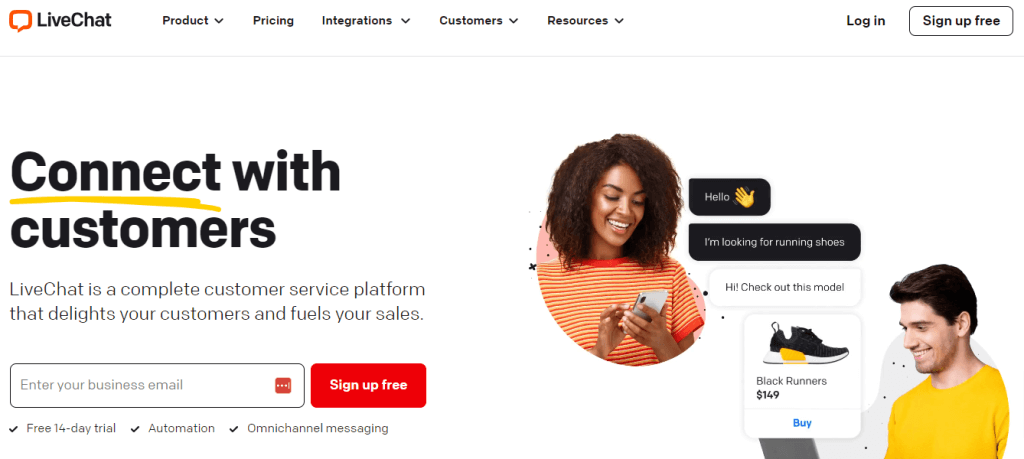
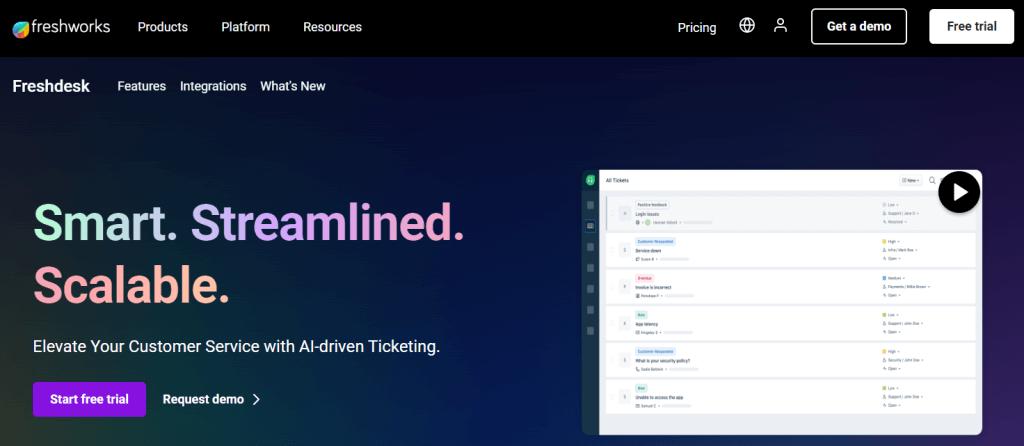
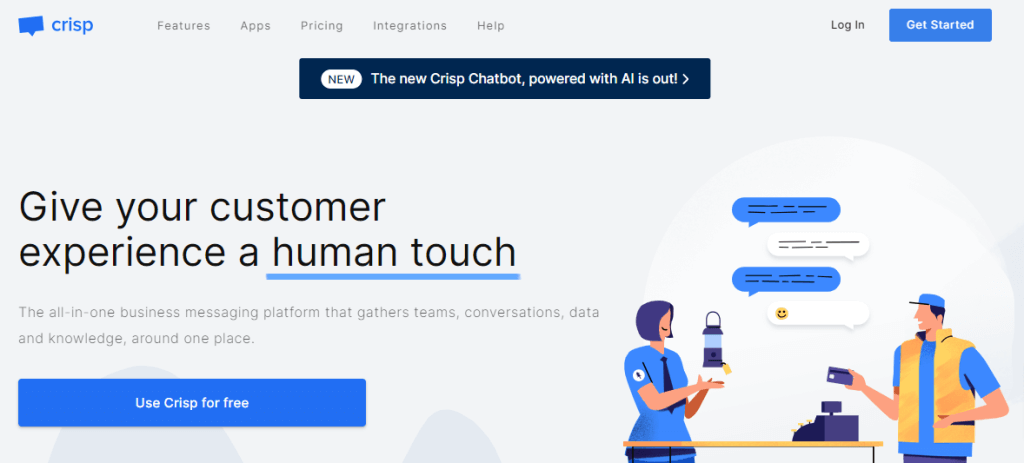
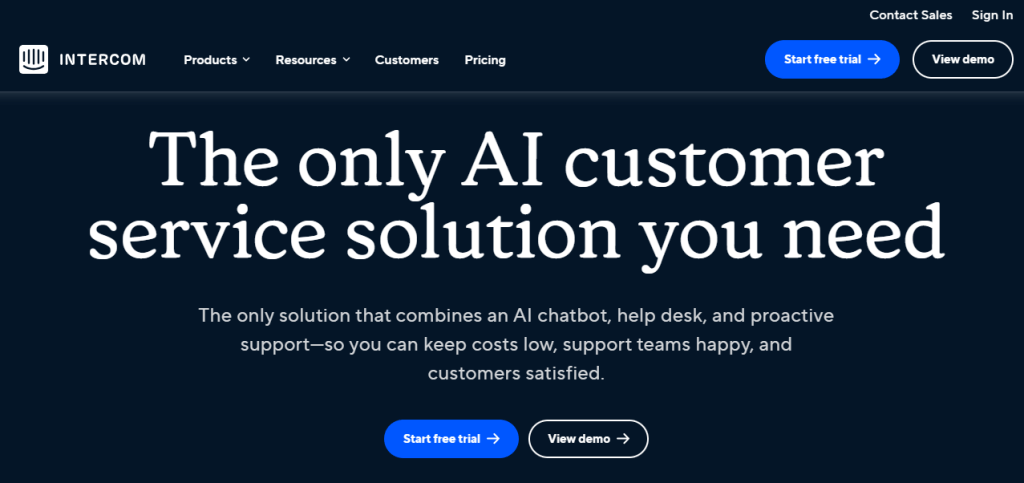

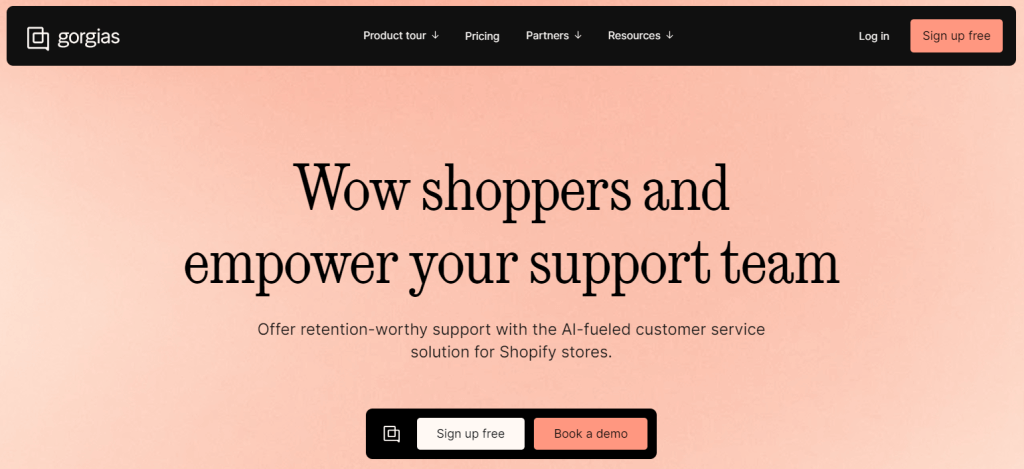




 In our search for the best chatbot builders, we’ve come across Tidio, a platform that offers a unique blend of AI and traditional chatbot features. Tidio stands out for its seamless integrations with a wide variety of site builders and CRMs, making it easy to connect with your existing tools. Whether you’re using WordPress, Shopify, or any other popular website builder, Tidio has got you covered.
Tidio’s chatbots work across multiple channels, including website chat, Facebook Messenger, WhatsApp, and email. This multichannel approach allows you to reach your customers wherever they prefer to interact. By being present on different channels, you can provide a consistent and convenient experience for your users.
Another advantage of Tidio is its affordability. With pricing plans starting from just $29 per month, Tidio offers a cost-effective solution for businesses of all sizes. The platform also provides a free plan, allowing you to get started and test its capabilities before committing to a paid subscription.
Overall, Tidio stands out for its mix of AI and traditional chatbot features, extensive integrations, multichannel capabilities, and affordable pricing. Whether you’re a small business or a larger enterprise, Tidio offers a versatile and user-friendly chatbot builder to help you enhance your customer support and engagement.
In our search for the best chatbot builders, we’ve come across Tidio, a platform that offers a unique blend of AI and traditional chatbot features. Tidio stands out for its seamless integrations with a wide variety of site builders and CRMs, making it easy to connect with your existing tools. Whether you’re using WordPress, Shopify, or any other popular website builder, Tidio has got you covered.
Tidio’s chatbots work across multiple channels, including website chat, Facebook Messenger, WhatsApp, and email. This multichannel approach allows you to reach your customers wherever they prefer to interact. By being present on different channels, you can provide a consistent and convenient experience for your users.
Another advantage of Tidio is its affordability. With pricing plans starting from just $29 per month, Tidio offers a cost-effective solution for businesses of all sizes. The platform also provides a free plan, allowing you to get started and test its capabilities before committing to a paid subscription.
Overall, Tidio stands out for its mix of AI and traditional chatbot features, extensive integrations, multichannel capabilities, and affordable pricing. Whether you’re a small business or a larger enterprise, Tidio offers a versatile and user-friendly chatbot builder to help you enhance your customer support and engagement.

